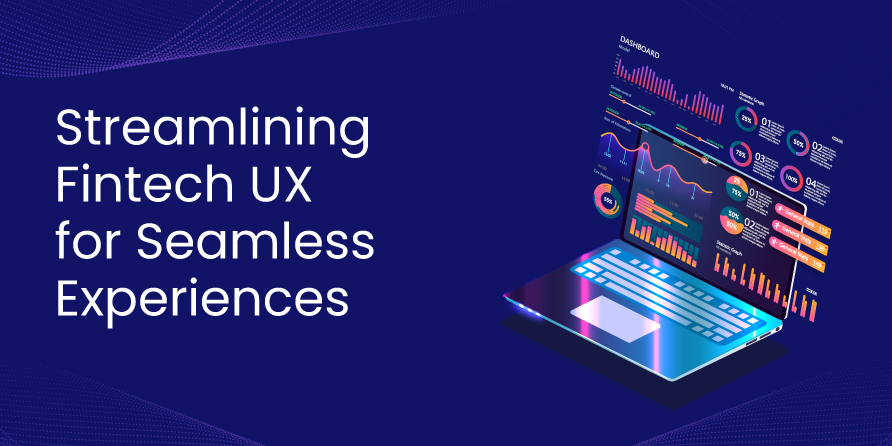

The fintech landscape evolves rapidly, with each passing day, placing innovation and user experience (UX) in the spotlight. Removing barriers in digital interactions is no longer an option but an indispensable imperative. Fintech companies have undeniably transformed the financial landscape by offering inventive solutions that simplify banking and investing. However, to flourish in this dynamic environment, these enterprises must commit to elevating UX and minimizing friction in their digital services.

Demystifying UX Friction
Before we delve into the tactics to reduce UX friction, let’s unravel what it entails and why it holds such significance. UX friction encompasses any element or facet of a digital product or service that hampers users’ ability to achieve their objectives. This could involve tardy page loading, perplexing navigation, excessive data input requirements, or any hurdle that disrupts the user’s journey.
In the fintech domain, where users demand efficiency, security, and user-friendliness, even the tiniest bit of friction can lead to discontent, abandonment of the platform, or even legal complications. As competition in the fintech arena intensifies, delivering a seamless user experience can become a pivotal differentiator for businesses.
Decoding the User Expedition
The quest to reduce UX friction begins with an in-depth understanding of the user journey. Fintech enterprises must acknowledge that their clientele typically seeks financial services to simplify their lives, save time, and gain control over their finances. Hence, every digital interaction must be meticulously designed with these objectives in mind.
Here are some fundamental principles to adhere to when crafting a seamless user journey in the fintech realm:
- Swift Onboarding: Simplify the user registration and onboarding process. Cut down the number of steps and the amount of information users must provide. Offer the option to link their accounts through APIs or open banking for a quicker setup.
- Intuitive Navigation: Engineer a user-friendly and intuitive navigation structure that allows users to effortlessly locate what they need. Well-organized menus, lucid labels, and a logical information hierarchy can significantly reduce friction.
- Personalization: Utilize user data to personalize the experience. Suggest pertinent products or services based on the user’s financial history and preferences. Personalization not only boosts engagement but also cuts down the time users spend searching for solutions.
- Speed and Performance: Guarantee swift page loading and responsiveness across all devices. Sluggish page loading is a major source of friction and can prompt users to abandon the platform.
- Transparency and Security: Convey clear information about security measures and financial regulations to build trust. Users must feel assured that their financial information is well-protected.
- Mobile Optimization: Given the growing use of mobile devices for financial transactions, it’s imperative to optimize your platform for mobile users. Mobile-responsive design is no longer a choice but a necessity.
Harnessing Technology for Enhanced UX
In the fintech industry, technology takes the lead in enhancing user experience and reducing friction. Here are some technological solutions that fintech enterprises can leverage:
- AI and Machine Learning: AI and machine learning algorithms should be implemented to analyze user behavior, identify patterns, and make real-time recommendations. These technologies also aid in fraud detection and risk assessment.
- Chatbots and Virtual Assistants: Chatbots can provide immediate assistance to users, answering common questions and guiding them through processes. They offer round-the-clock support, diminishing the need for human intervention and boosting user satisfaction.
- Biometrics and Two-Factor Authentication: Enhance security while minimizing friction by incorporating biometric authentication methods (e.g., fingerprint or facial recognition) and two-factor authentication. These technologies enhance the user experience while ensuring robust security.
- API Integrations: Embrace open banking and integrate with APIs to provide users with a comprehensive financial dashboard. This enables them to view multiple accounts and perform various financial transactions from a single platform, reducing the need to navigate between different apps.
User Feedback and Continuous Enhancement
The journey to reduce UX friction is a perpetual one. User feedback is an invaluable asset for identifying pain points and areas that need improvement. Fintech enterprises should actively solicit user feedback and continually refine their digital platforms.
User testing and usability studies provide insights into how actual users interact with the platform and where they encounter friction. Gathering feedback through surveys, reviews, and direct communication with users can help pinpoint specific issues and guide design decisions.
Furthermore, A/B testing can be a potent tool for experimenting with different design elements and functionalities to determine what resonates best with users. By systematically testing and analyzing user behavior, fintech enterprises can fine-tune their platforms and make data-driven decisions to reduce friction.
Compliance and Data Privacy
In the tightly regulated world of finance, it’s vital for fintech enterprises to strike a balance between delivering a frictionless user experience and ensuring compliance with financial regulations and data privacy laws. Users must trust that their financial information is secure and handled with care.
To address this, fintech enterprises should invest in robust data protection and privacy measures. Compliance with regulations such as GDPR (General Data Protection Regulation) and PSD2 (Payment Services Directive 2) is non-negotiable. Clearly communicate your commitment to data security and privacy to instill trust in users.
Conclusion
Minimizing UX friction is the key to success for fintech enterprises striving in a competitive market. By prioritizing the user journey, harnessing technology, gathering user feedback, and adhering to regulatory compliance, businesses can create a seamless digital experience.
Through ongoing refinements, fintech enterprises can build trust, boost user engagement, and cement their status as industry leaders. In the realm of fintech, the future belongs to those who prioritize the user experience and make digital interactions as smooth as silk.
The Higher Pitch is your go-to partner for efficient financial crime prevention. Our solution simplifies operations, cuts training costs, and helps compliance teams quickly detect suspicious activities. We prioritize a user-friendly experience, ensuring a seamless journey in the fight against financial crimes.
Revitalize UI/UX for a game-changing experience with The Higher Pitch!
Related blogs

Let’s start a brand-new story!



